Here’s What Trump’s Really Up to With His Response to L.A. Fires
Trump’s actions would drain freshwater from a 1,000-square-mile estuary that provides drinking water to millions of people, irrigates the surrounding farmland, and sustains a salmon fishing industry.
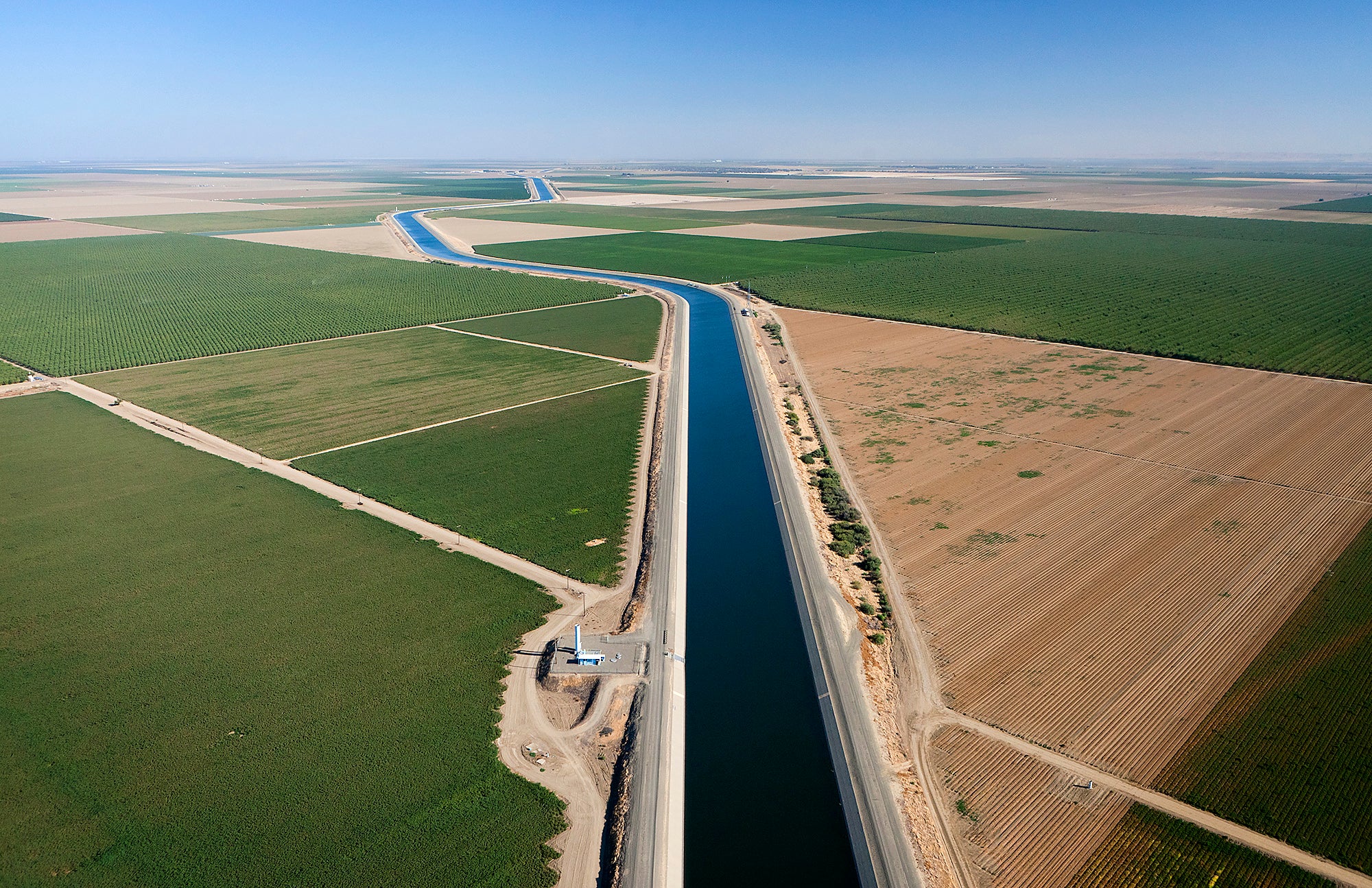
This week, President Donald Trump announced a handout to his allies dressed up as wildfire relief.
Citing the fires in Los Angeles, Trump ordered federal agencies to immediately deliver more water — not to Southern California, but to the Central Valley hundreds of miles away, where agribusiness stands to profit. He told the agencies to override any rules such as endangered species protections that might hinder this operation.
Trump’s actions would drain freshwater from the San Francisco Bay Delta, a 1,000-square-mile estuary that provides drinking water to millions of people, irrigates the surrounding farmland, and sustains a salmon fishing industry. He is treating the costliest fire in U.S. history as an excuse to move forward with projects that have been on his administration’s wishlist since its first term in office, while also advancing the administration’s broader goal of tanking the Endangered Species Act.
Earthjustice has more than two decades of experience litigating to protect the Delta, the web of life it supports, and the human communities that depend on it. We are prepared to take up this fight again — and to set the facts straight about what the Trump administration aims to do.
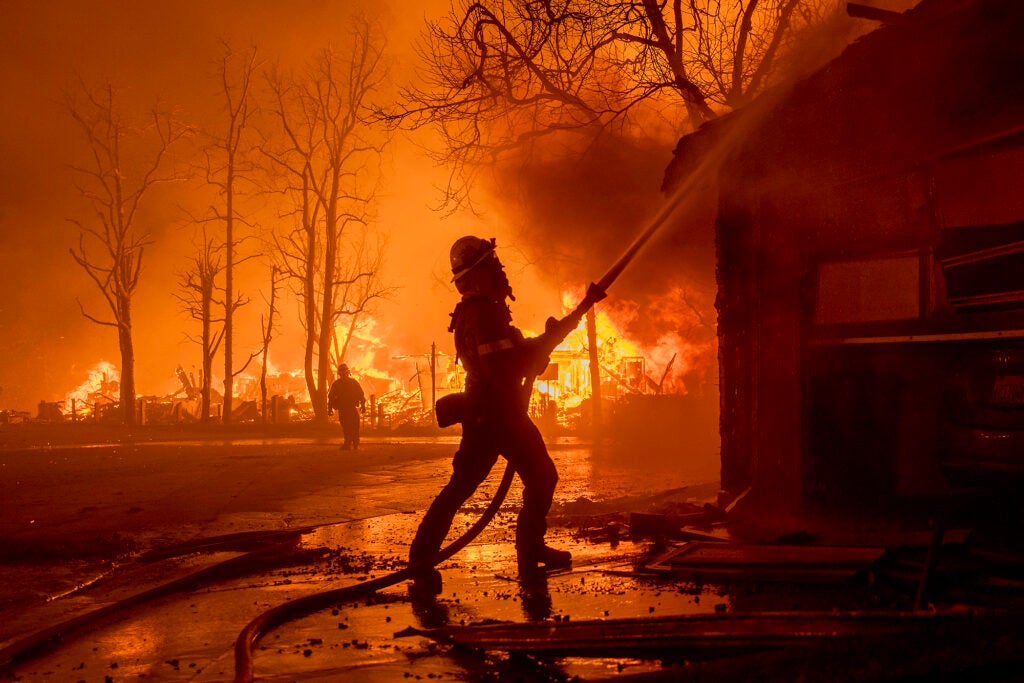
Firefighters battle the Eaton Fire in strong winds as many homes burn on January 7, 2025 in Pasadena, California. (David McNew / Getty Images)
Trump Is Wrong About Why the Fires Were So Bad
The president has falsely claimed that protections that keep water in the Delta hampered firefighters, and that his order would replenish water shortages for firefighting efforts in Southern California.
In reality, California’s regional and statewide reservoir system is currently above the historic average in its water storage. Environmental efforts to protect threatened species had nothing to do with water availability for fighting the L.A. fires. When hydrants in L.A. ran dry, it was because the storage tanks and pumping system that immediately feed into the hydrants could not keep up with unprecedented demand. The municipal water system was not designed to fight multiple fires driven by 100-mph winds. No water system is.
What did make the L.A. fires worse is climate change. UCLA researchers have concluded that an abundance of vegetation dried out by abnormally high temperatures fueled the devastating blaze. Yet in the first weeks of his term, Trump has moved to abandon climate action by withdrawing the U.S. from the Paris Climate Agreement, pushing to greatly expand fossil fuel production, and attacking clean energy.
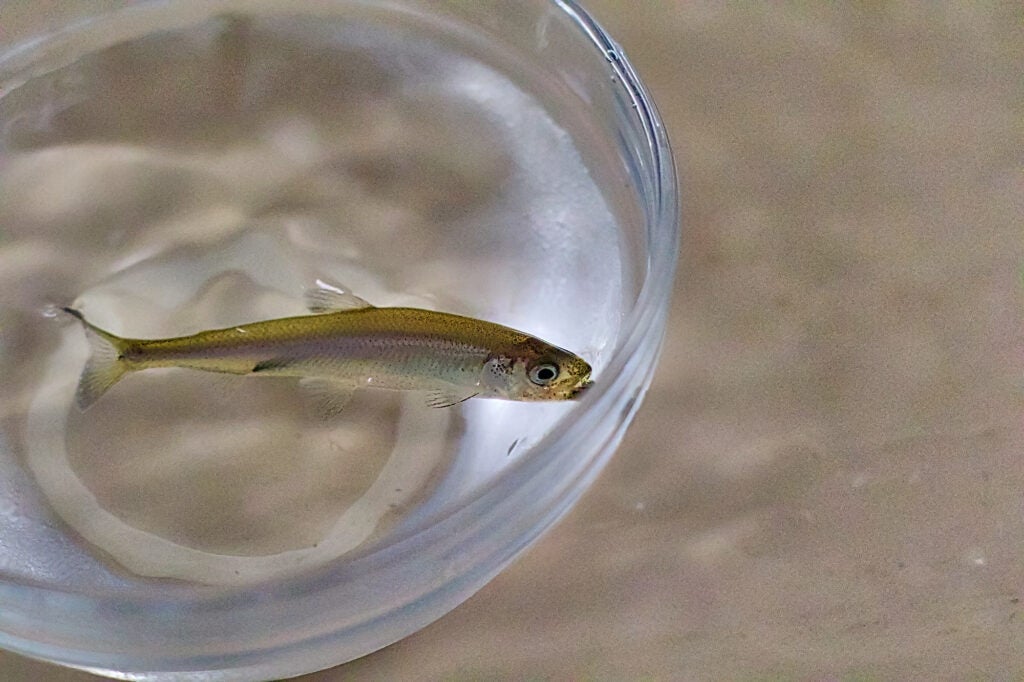
Delta smelt are protected by the Endangered Species Act and are an indicator of the overall health of the Sacramento-San Joaquin River Delta. (Steve Martarano / USFWS)
Endangered Species Protections Help Ensure California’s Taps Don’t Run Dry
When Trump told agencies to bypass any rules that slowed the delivery of water to the Central Valley, he was thinking of the delta smelt.
Widely viewed by fish biologists as an indicator of the overall health of the Delta ecosystem, the smelt’s population has plummeted in recent years to a fraction of its historic abundance. Studies show that diverting more water from the Delta could lead to the smelt’s extinction and degrade an ecosystem that is already struggling due to climate change, pollution, and increasing demand.
When irrigators divert freshwater out of the Delta, saltwater flows in to take its place. Smelt and other native fish can only tolerate so much salt, so as salt water encroaches inland, their habitat shrinks.
Because the smelt is protected under the Endangered Species Act, the government is required to ensure that enough freshwater flows through the Delta for the fish to survive and recover. The U.S. Supreme Court has upheld the smelt’s protections against a challenge from the agriculture industry.
Trump’s order invokes a provision of the ESA that empowers a small committee to decide the fate of an endangered species. The committee consists of Trump appointees, and it can greenlight controversial projects even at the cost of wiping out an entire species.
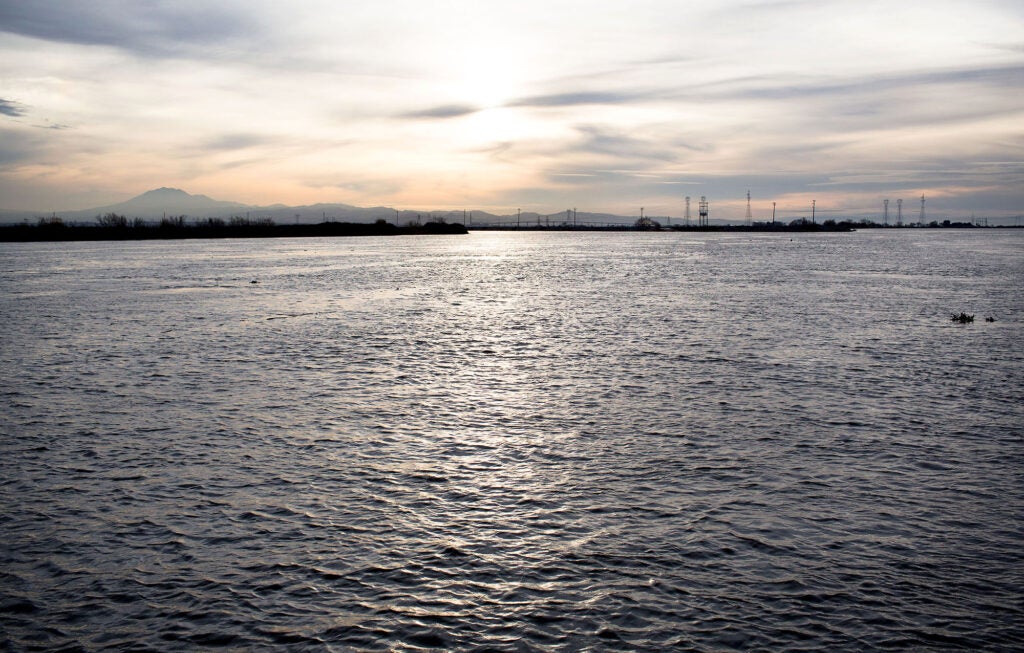
The Sacramento-San Joaquin River Delta. (Brad Zweerink for Earthjustice)
If the administration overrides protections that keep water in the Delta for the smelt, all the other species that depend on that water will suffer too — including the millions of humans who drink it, fish in it, and use it to grow their crops. We can’t survive on brackish water any more than the smelt can.
Though the stakes are high, there is a legal process the committee must adhere to. We will hold the Trump administration accountable for following it. The committee can’t simply “wave its hand and declare a particular species no longer within the protection of the ESA,” as Earthjustice Vice President of Lands, Wildlife, and Oceans Drew Caputo told the New York Times.
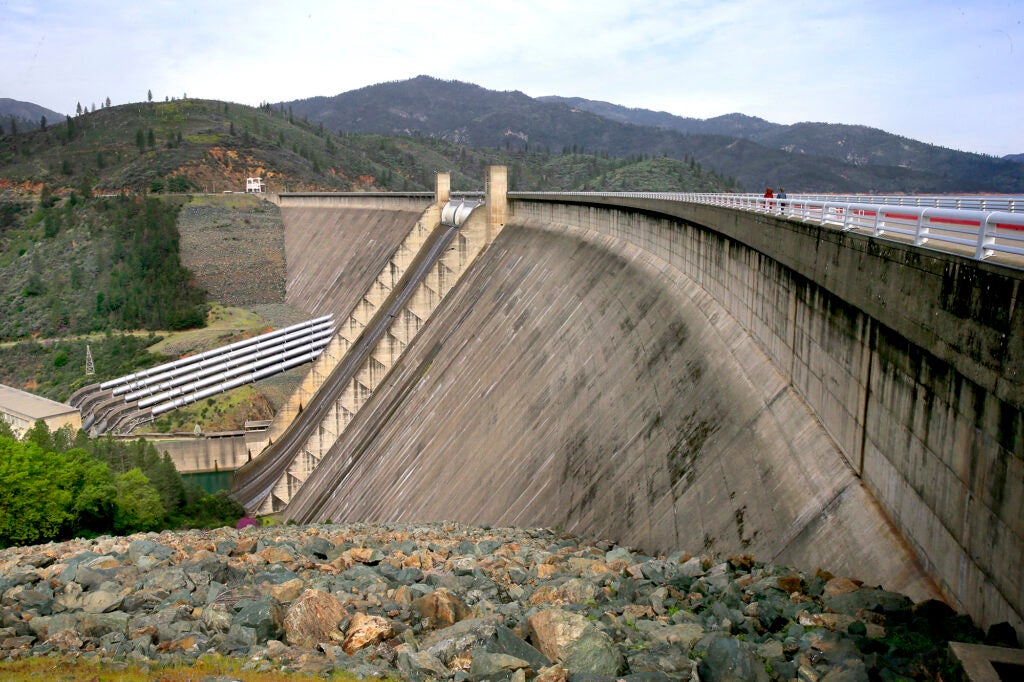
Shasta Dam at Shasta Lake, California. (Michael Macor / San Francisco Chronicle via AP)
Trump’s Order Could Advance a Disastrous Dam Project
In addition to endangering the Delta ecosystem, Trump’s order is poised to revive a pet project from the president’s first stint in office — one that could have disastrous impacts on salmon.
In the mountains of Northern California, Shasta Dam helps determine how much water flows into the Delta. Since 1945, the dam has obstructed Chinook salmon in their journey back from the Pacific Ocean to spawn. Yet the first Trump administration threw its weight behind a plan to raise the dam by 18.5 feet that would have benefited big commercial agriculture.
Adding to the dam’s height would flood parts of the protected McCloud River, damaging tribal lands and a prized trout fishery. Earthjustice went to court to stop this plan in 2019, and it never moved forward.
Now the plan may get new life, with Trump’s order directing his administration to find ways to deliver more water southward, including by increasing storage. But some things haven’t changed: Raising the dam remains illegal under both federal and state regulations.
No one, including the Trump administration, is above the law. We will not let the administration dry up California and undermine endangered species protections. And we won’t stand by idly as Trump misinforms the public to bring harm to our environment.
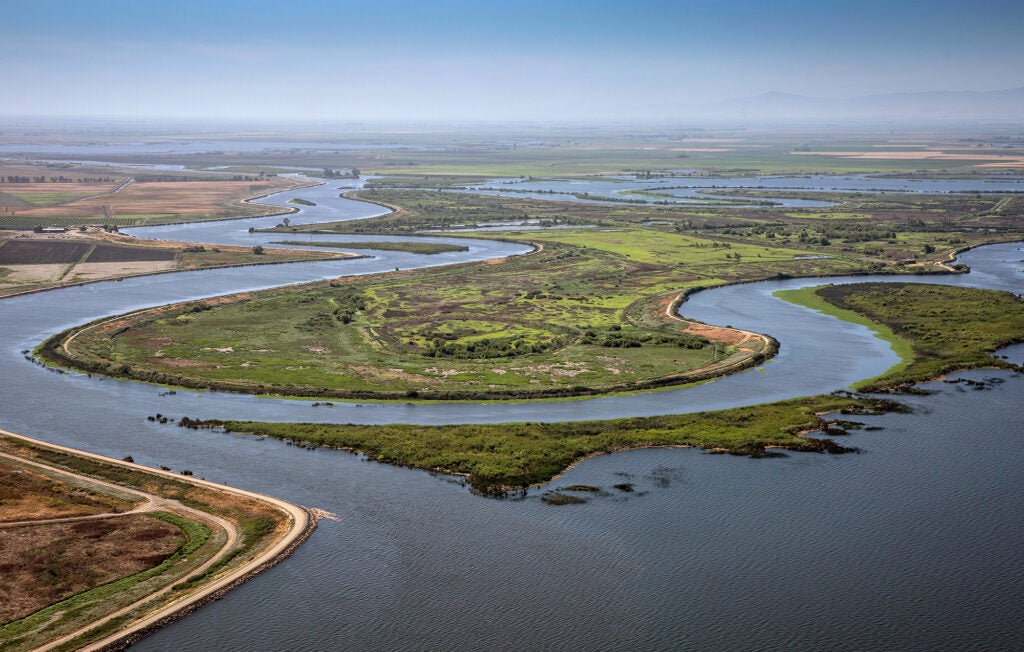
Farmland and small islands located near the confluence of the Sacramento and San Joaquin Rivers, is viewed from the air near Rio Vista, California. (Photo by George Rose/Getty Images)
The California Regional Office fights for the rights of all to a healthy environment regardless of where in the state they live; we fight to protect the magnificent natural spaces and wildlife found in California; and we fight to transition California to a zero-emissions future where cars, trucks, buildings, and power plants run on clean energy, not fossil fuels.